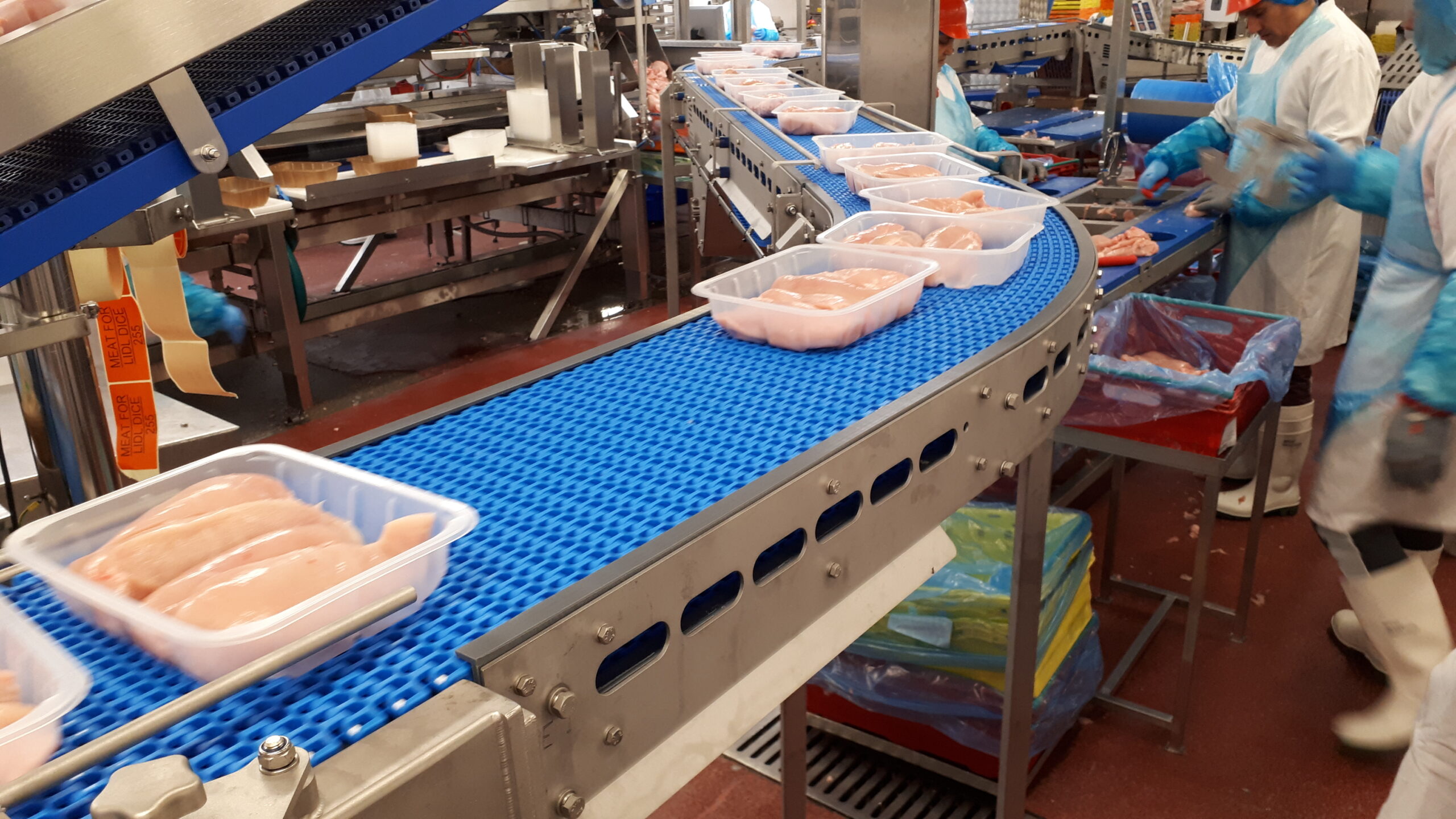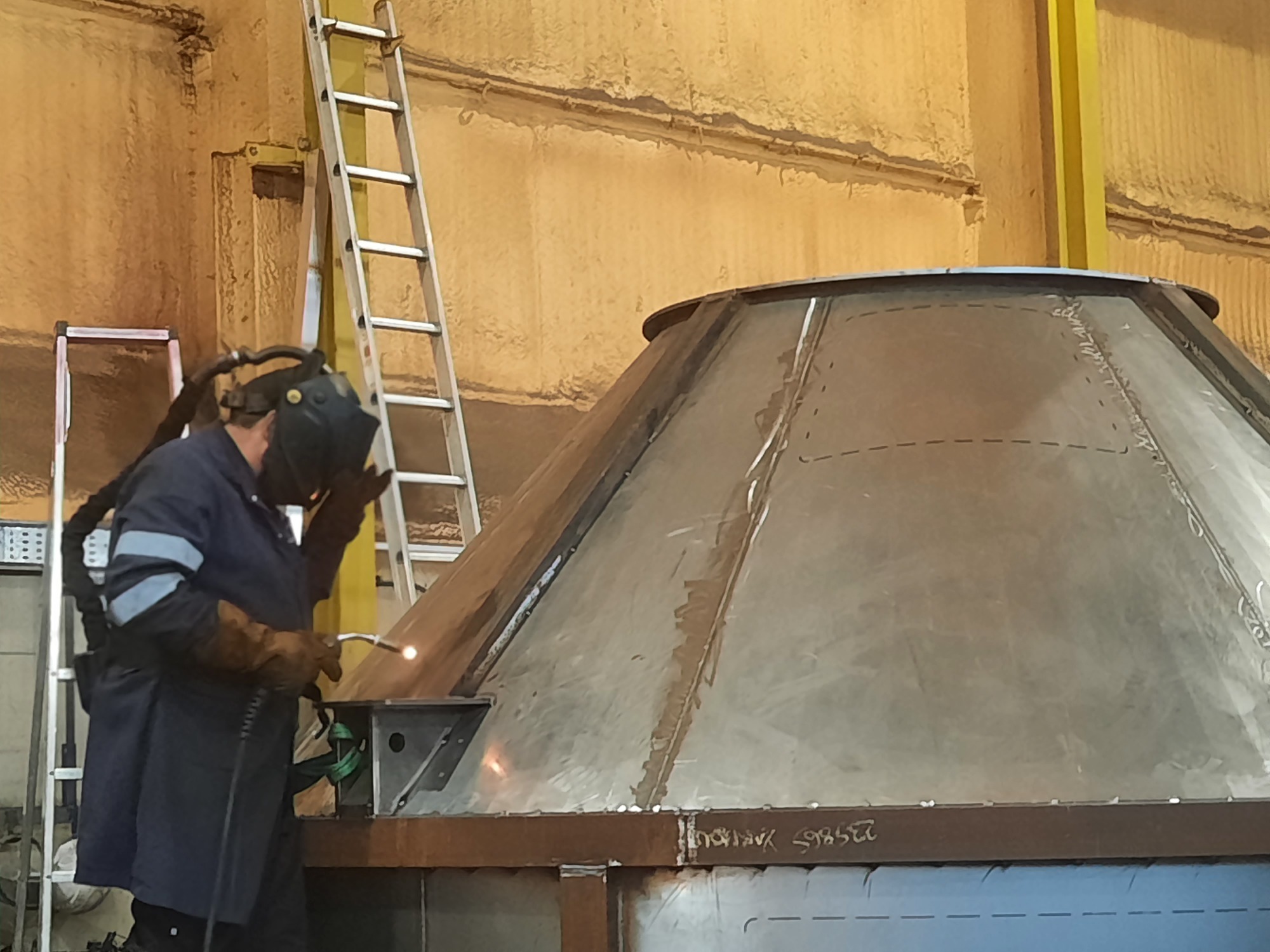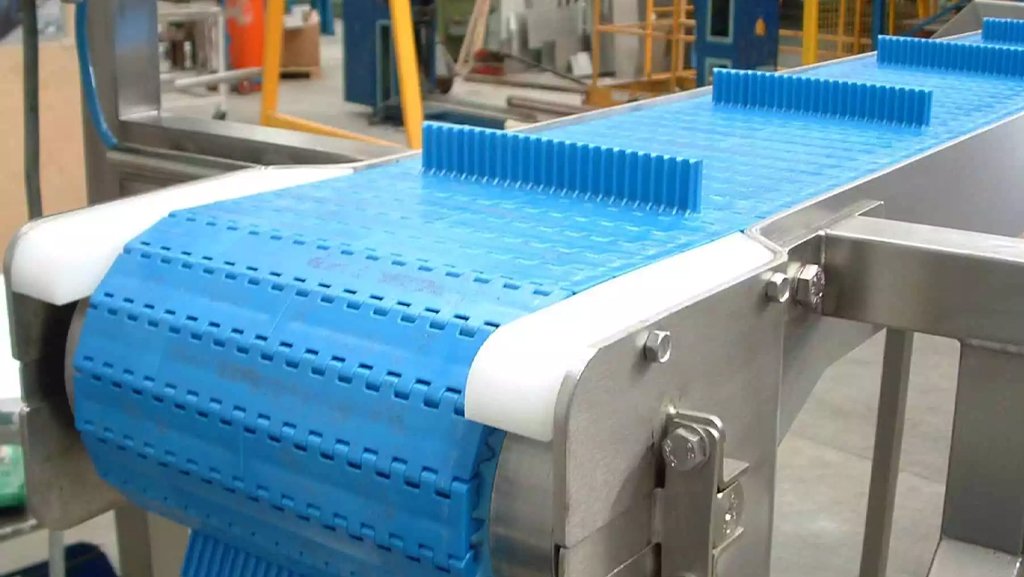Manufacture of large Chimney Stacks and Cyclones for herb production facility. Project: Camstar Herbs -…
Food grade conveyors can help to give a company the edge in the food processing industry – an extremely important factor in such a competitive sector. In this post, we take a look at how these systems can help to improve efficiency and accelerate production in a food processing facility.
When specifying a food grade conveyor, some important criteria to consider include:
- Materials of construction: conveyor components should be made of food-grade materials that are safe for contact with food products and are easy to clean and sanitize.
- Design: conveyors should be designed with smooth surfaces, rounded corners, and minimal crevices to prevent the accumulation of food particles and bacteria.
- Hygiene: conveyors should be designed to be easy to disassemble and clean.
- Sanitation: conveyors should be able to withstand cleaning and sanitizing methods such as steam cleaning and pressure washing.
- Durability: conveyors should be able to withstand the harsh conditions of a food processing environment.
- Compliance: conveyors should be designed to meet relevant food safety regulations and standards, such as those set by the USDA, FDA, and other organizations.

Examples of how conveyors in food processing plants increased productivity
- Automated sorting and packaging: Conveyors in food processing plants can be used to automatically sort and package products, reducing the need for manual labor and increasing productivity.
- Streamlining production lines: Conveyors can be used to connect different stages of the production process, allowing for a seamless flow of materials and finished products, which increases efficiency and reduces downtime.
- Improved sanitation: Conveyors in food processing plants can be designed to be easily cleaned and sanitized, reducing the risk of contamination and increasing overall product safety.
- Increased capacity: Conveyors can be used to increase the capacity of food processing plants by allowing for the movement of large quantities of materials and finished products quickly and efficiently.
- Reduced labour costs: Automated conveyor systems can help reduce labour costs by reducing the need for manual handling of products, which also minimize the risk of injuries and increase overall productivity.
High speed, minimal manual intervention
Food grade conveyors grade food at high speed, crucially without the need for manual intervention. The systems help to facilitate the automated indexing of naked or packaged products, as well as increasing the speed at which products can be labelled and packaged.
In the short term, this can help to make a food processing facility run more efficiently, while in the long run, it can increase profitability.
Food Grade Conveyors Available from Wrightfield
At Wrightfield, we develop and install a range of food grading systems that can be seamlessly connected to the other steps within a production process. Our conveyors are both adaptable and flexible, ensuring that a package format can be changed quickly and easily.
Wrightfield food grade conveyors are designed with accuracy in mind, which is a factor that helps to minimise giveaway. Our reliable systems are also very efficient to run, with low operational costs and minimal downtime.
Food Graders
The food graders can be automated when required, reducing the need for manual intervention and further streamlining running costs.
With a great deal of experience in the food processing industry, we understand the importance of hygiene. All Wrightfield manufactured food grade solutions are food safety compliant. Wrightfield food grade conveyors can be manufactured to the requirements of individual customers, this includes tailored lengths and widths.
Food Grade Conveyors – More Information
Click on the following link to find out more about our food grade conveyors or this link for information on other stainless steel equipment manufactured by Wrightfield.
Food Grade Conveyors Developments
There have been several developments in food grade conveyors in recent years, including:
- Materials: Food grade conveyors are typically made of materials that are safe for food contact and easy to clean. Advances in materials science have led to the development of new materials, such as high-density polyethylene (HDPE) and antimicrobial plastics, that are even more suitable for food processing environments.
- Design: Conveyors are being designed to meet the specific needs of the food industry. For example, modular designs are becoming more common, which makes it easier to customize conveyor systems to fit the specific requirements of a food processing facility. In addition, the use of hygienic designs and self-cleaning systems has increased, which helps to prevent contamination and makes cleaning easier.
- Automation: Many food processing facilities are moving towards more automation in order to improve efficiency and reduce the risk of human error. Conveyor systems are no exception, and there has been an increase in the use of automated conveyor systems that can monitor and control the flow of products through the processing line.
- Sanitation: Food safety is a top priority in the food industry, and conveyors are being designed with sanitation in mind. For example, some conveyors are equipped with UV lights that kill bacteria and other microorganisms, while others use high-pressure water jets to clean and sanitize the conveyor belt.
- Sustainability: Environmental sustainability is becoming increasingly important in the food industry, and there has been a push to develop more sustainable conveyor systems. This includes the use of materials that are recyclable and the development of more energy-efficient systems that use less electricity and produce less waste.




